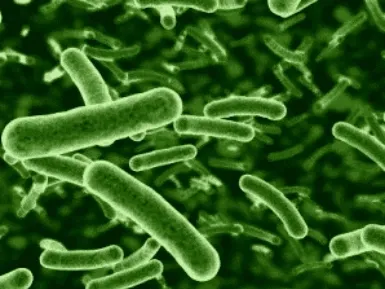
There is a very widespread habit that everyone passes on from mouth to mouth, and that the industry started.
That strange tendency to have and generate social alert, to a contamination whose intensity does not exist and has possibly never existed.
You tell an installer that you do not follow the imposed safety standards.
The poor ignorant person verbally attacks you and makes it clear that you are crazy and that you are reckless and a social danger. While her mother lives in a rural cottage with a full and unused swimming pool, surrounded by puddles.
This strange fear that does nothing but give free rein to what the industry intends to do.
Create new definitions, trends, regulations.
Obligations that, as always, end up generating a series of large expenses.
Expenses that always end up in the hands of the consumer, and to the benefit of everyone else.
Anything goes to create business.
When someone finds out that I have a home solar thermal installation, this is the first thing they ask me:
Is your installation protected against legionella?
Most people who ask me this don't even know what legionella is.
If I ask them, many end up answering "I don't know, that's what I've heard around."
Those who do know what legionella is, always point to where the trade accuses them, to everything that a consumer has in front of them and to which a maintenance obligation can be attributed.
But what about ponds? What about puddles? What about abandoned pools? And the swamps?
The Ministry of Health is responsible for controlling this bacteria in drinking water.
It also warns us that the substances used for this control have a 48-hour guarantee.
Therefore, the warning refers to all those people who intend to bottle and store it.
Although no one is taking into account how long the water remains stagnant in underground pipes.
No less than all the towns and cities, hundreds and thousands of kilometers.
And what happens in those towns where a pseudo-official controls the drinking water with a pH meter and nothing else? (Incredible, but they exist)
What happened? and what is still happening with the towns that continue the custom of drinking from their rooftop pools? What is happening and will continue to happen with the traditional representative fountains that almost all the towns in the south of Spain have? (whose maintenance is at most, an annual cleaning with bleach)
Has anyone ever received a warning or been held responsible for any consequences for storing the water in their pool until the following year?
Washing dishes with cold water and letting them air dry - could that be reckless?
According to what I have read, the supposed special antibiotic applied in drinking water to treat legionella does not end its existence.
What it does is control and slow down the virus and supposedly in that state it does not act against our health.
Is this a coherent explanation? (We should be afraid even to wash dishes)
It is supposed that this water will be in our digestive organs for many hours.
But even after digestion, this water will be irrigating all our cells.
En el pasado no hubo una seria amenaza en el agua fría de consumo, que antiguamente se almacenaban en todas las azoteas (y de ahí se consumía).
Todavía existen muchas casas rurales que siguen esa costumbre sin saber exactamente porqué. (La verdadera razón de esa tradición se basaba en poder abastecerse ante los continuos cortes de suministro de agua)
Ni tan siquiera en ese uso insalubre habían mantenimientos, y se usaban los ahora prohibidísimos tubos de plomo.
Ahora la industria nos impone la preocupación de un agua que se consume a diario.
Cuyas temperaturas raramente bajarán de 30ºC.
Cuando varias diputaciones regionales considera que miles de muertes por Xm2 entra en la normalidad, y no activa protocolos de nada. Y ahora en nuestros tejados tenemos que protegernos de un bicho pandémico horroroso y mortal.
In the hypothetical case that I want to avoid a supposed risk of contamination by legionella (follow the regulations and their costs).
I should have an electric resistance in my installation turned on every time my water is consumed or falls below 60ºC.
These times are, when a large part of that water is consumed, cold nights, cloudy days.
If at 8am the water is warm and the sun comes out at 10am, the system does not know it, and consumes the same as if it were 3 in the morning.
So, 48º is not enough for us, we must urgently heat to those 60ºC, and maintain them.
This concept is confusing and It is contradictory when someone tries to sell me an ecological device.
They will sell me a solar heater, ecological, that works 100% with the sun, and has an electric resistance that will work many times and behind my back.
That being so, what I will be buying is an electric accumulator with solar support. (although the pamphlet promotes the opposite)
I know that there are people who have realized that their solar heater heats the bill faster than the water, and has cancelled this resistance.
So…. Is anyone able to calculate the energy consumption of?
Thousands and thousands of electrical resistors consuming resources on roofs and terraces.
Energy that is thrown away (not converted)
What is the benefit of many Megawatts to keep water extremely hot?
Would anyone be able to evaluate the ratio of ‘risk’ VS ‘cost’?
Does this comply with the theory of -> «killing a fly with a cannon»?
If we think about it a little… whether or not this fear with hints of risk to health is true….. there is a lot of fear… but with very little basis.
Do you really believe that legionella is what they tell us?